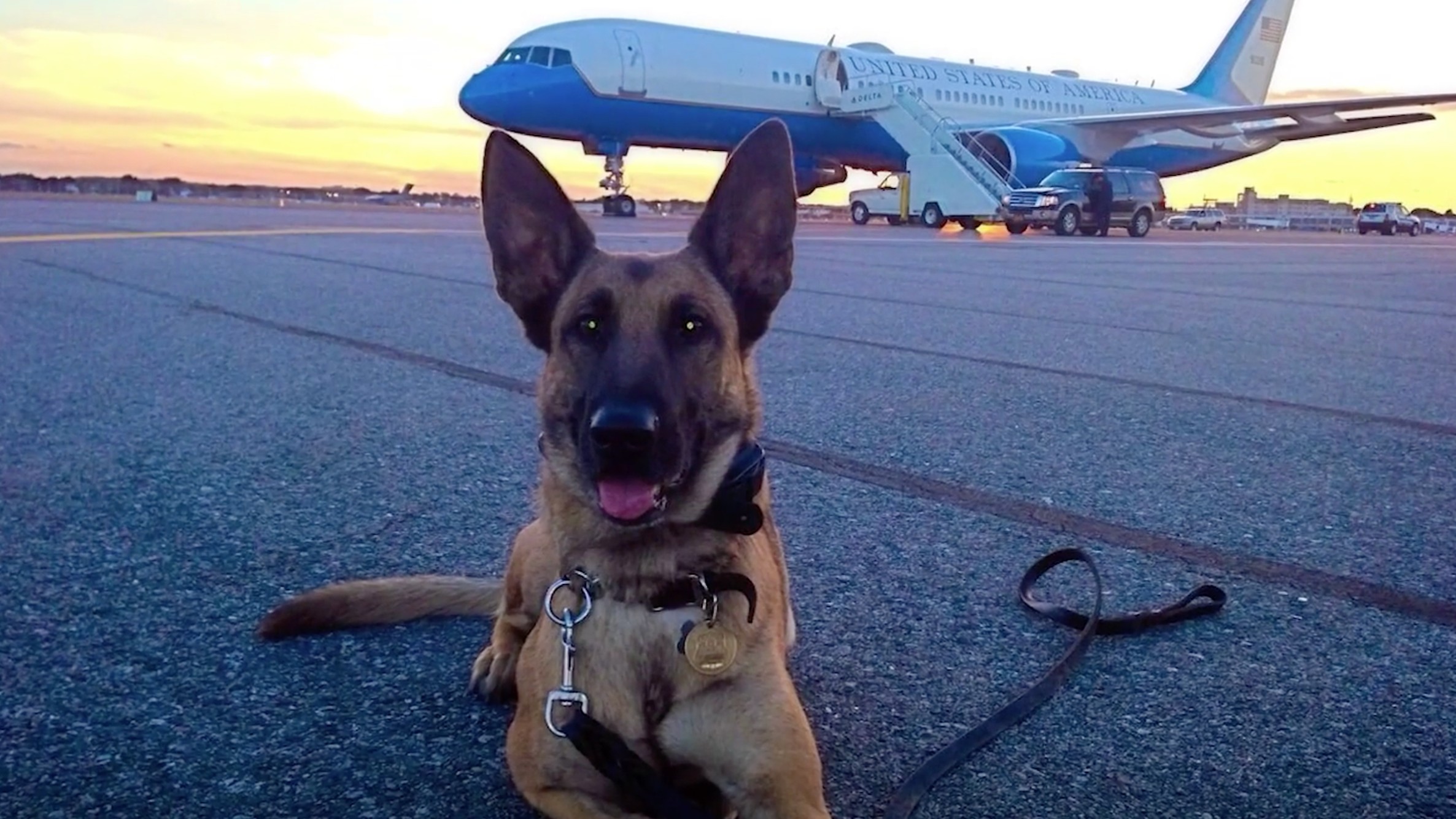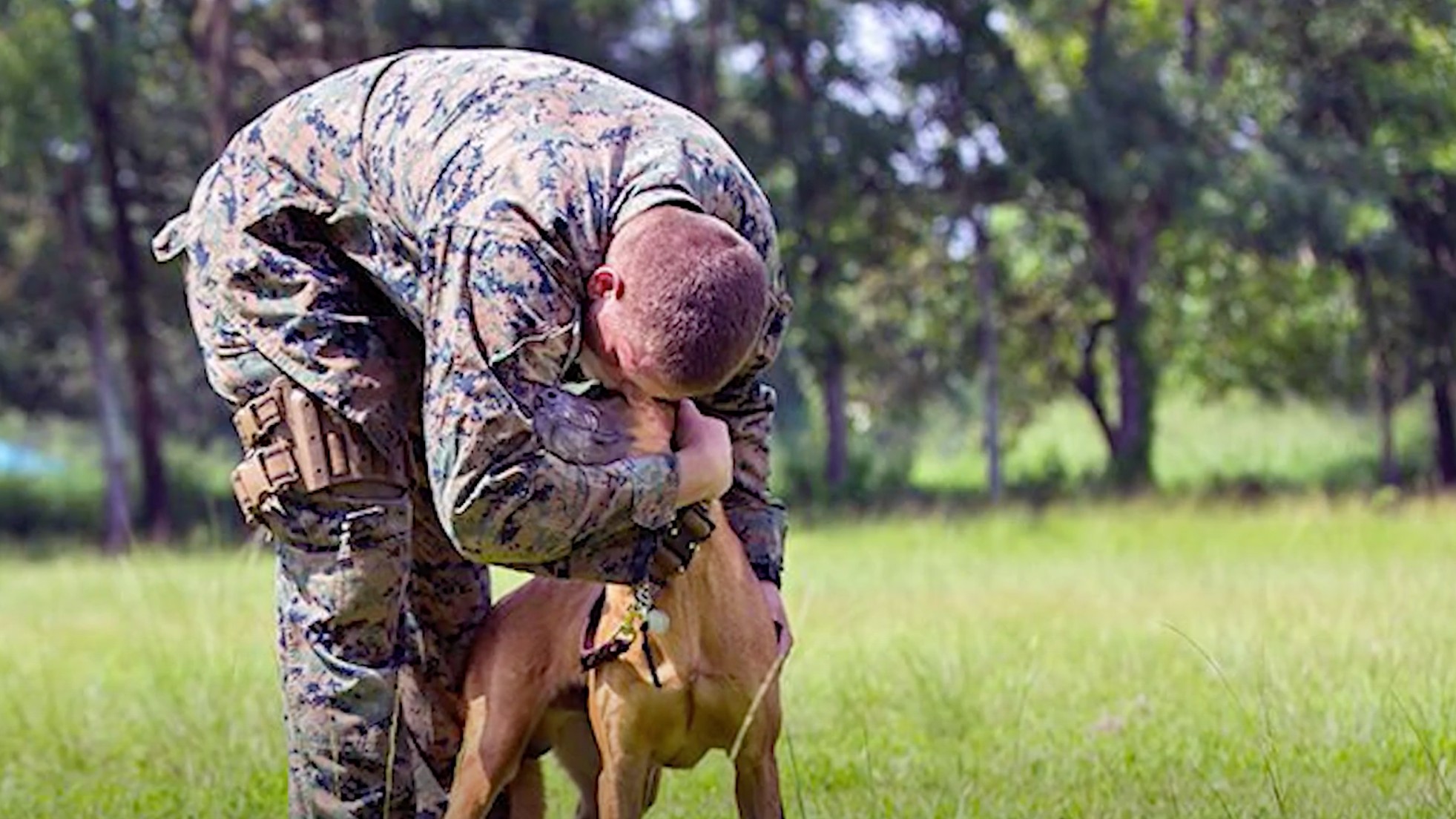Secret Service dogs: The inside scoop on the President’s protectors
We reveal what it takes to protect the US President

If you thought going for a regular job interview was tough, spare a thought for the Secret Service dogs who must complete 20 weeks of rigorous training to see if they’re up for the task of protecting the President of the United States.
Did we mention that’s just to get the job? Once hired, Secret Service dogs are required to continue to train for eight hours every week for the remainder of their careers. Now that’s what we call commitment to the job!
In her book Secret Service Dogs: The Heroes Who Protect The President Of The United States, veteran journalist and New York Times bestselling author, Maria Goodavage shares what she learned during her unprecedented access to these heroic dog teams – and just how tough it was to gain that access.
“It took me nine months to secure permission, from when I first started contacting the Secret Service until they said yes,” she explains. “They’d never done anything like that before and that was really interesting.”
While Belgian Malinois, often referred to as the world’s toughest police dogs, have traditionally exclusively been used within the Secret Service, recent years have seen a move to include other breeds that can also be safely used in public crowds.
This new throng of Secret Service dogs is often seen patrolling outside the White House gates, sniffing incoming visitors, protestors, and passing joggers, overseen by a team of specialized handlers. Goodavage describes writing her book as an amazing adventure and pays special tribute to the humans and canines that devote their lives to protecting the President.
“I am so impressed with the teams that protect the White House and the President,” she says with her trademark warm smile. “Everywhere the President goes, no matter what the politics of the President, the dogs will be there. Dogs are apolitical.”
Get the best advice, tips and top tech for your beloved Pets

Perhaps it’s that apolitical aspect of Secret Service dogs that has made Goodavage’s book a bestseller, allowing readers to get a different take on a world that is often mired in controversy.
While the book was released in 2016, the pressure that the handlers of Secret Service dogs feel is as relevant today as it was five years ago. “If you let down your guard on the job,” says Special Agent Bill G., canine program manager, “it can change the history of the world.”
Secret Service Dogs immerses readers into the heart of this elite group of dogs and handlers, taking us into the homes, veterinary hospitals, and training facilities of these special units, exploring their missions both at home and abroad.
Central to the book is the bond shared by handlers and their dogs, a unique partnership with connections that run deep. “These animals will gladly run into a hail of gunfire,” says 'Stew', a Secret Service ERT tactical canine unit supervisor. “All they ask in return is for their handlers to throw the ball with them, pet them, and talk to them in an embarrassingly high voice.”
When it comes to the President, rest assured that wherever he goes, a Secret Service dog will have been before him, clearing the way and always on hand to protect and serve. But given that their job title has the word ‘secret’ in it, it's no surprise that little was known about these courageous canines until the release of Goodavage’s book.
If you can’t wait to get your hands on your copy of Secret Service Dogs, then you’re in for a treat, because Maria is giving you the inside scoop on some of her favorite facts that she uncovered while researching her book.
Five fascinating facts about Secret Service dogs
1) The bond between a Secret Service dog and handler runs incredibly deep. The dogs live with their handlers and will go on to retire to their handlers. The bond, nothing short of love, is part of what makes these teams so strong and effective.
2) Nearly every visitor to the White House is screened by a dog, but most never realize it.
3) Every vehicle that enters the White House complex gets searched by a dog. The average Secret Service explosives detection canine searches 7,020 vehicles per year. That’s a lot of trunks and doors.
4) Emergency Response Team (ERT) dogs – the tactical dogs of the Secret Service –are so well trained that they can be leaping and in mid-air about to bite a 'bad guy', but not follow through if their handlers call them off – with just a single command.
5) Secret Service dogs are among the top frequent fliers of the canine world, with more than 200 flights – many international – during the course of their careers. In presidential campaign years, Secret Service dogs chalk up an average of 36 flights.
Secret Service dogs: Myth-busting

Goodavage also dispels some myths in her book, surprising readers when she says that the President rarely sees the Secret Service dogs.
“The President could look out of the White House on any given day and see plenty of dogs, but they’re not right there flanking his or her side. The explosives dogs will sweep for explosives anywhere he or she goes. These dogs will be ahead of the President. As far as the protective dogs [also known as tactical or Emergency Response Team (ERT) dogs] go, they are always there. But they are not like Secret Service agents, flanking them all the time.”
Secret Service dogs tend to work until around 10 years of age when they are retired to their handlers to enjoy a slower pace of life. Goodavage points out how well-deserved that retirement is, given how hard a Secret Service dog works.
“One of the big things the dogs have in common is that they work really hard. These dogs don’t quit, and their handlers don’t quit either. They just have that drive to keep on working for the rewards, the 'paycheck'.
And that paycheck is a Kong or some kind of ball and incredible praise from the handler they love so much. They just want to make the handler happy, and the handler wants to make the dog happy and it’s great.”

Kathryn is a freelance writer who has been a member of the PetsRadar family since it launched in 2020. Highly experienced in her field, she's driven by a desire to provide pet parents with accurate, timely, and informative content that enables them to provide their fur friends with everything they need to thrive.
Kathryn works closely with vets and trainers to ensure all articles offer the most up-to-date information across a range of pet-related fields, from insights into health and behavior issues to tips on products and training.
When she’s not busy crafting the perfect sentence for her features, buying guides and news pieces, she can be found hanging out with her family (which includes one super sassy cat and a kitten), drinking copious amounts of Jasmine tea and reading all the books.
She has written for a range of publications, including Fit&Well, Top Ten Reviews, LiveScience, Goodto, and Product Hunt.
